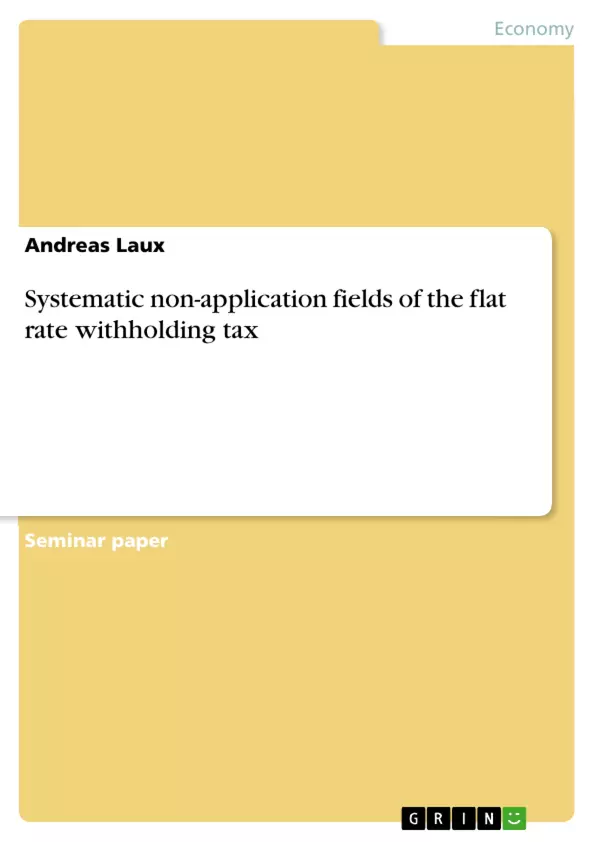Since the assessment period 2009 the treatment of private capital gains with regard to income tax in Germany has been newly regulated by the flat rate withholding tax. However, the regulation in the income tax law envisages numerous exceptions which are to be observed with the taxation. The fields of application of the flat rate withholding tax are systematically delimited. The numerous individual questions relating to the flat rate withholding tax will not be looked into.
Inhaltsverzeichnis (Table of Contents)
- Abstract
- Introduction and methods
- Results and discussion
- Principle of subsidiarity
- Exceptions from the flat rate withholding tax according to § 32d Par. 2 EStG
- Exceptions for capital investments within the meaning of § 20 Par. 1 No. 4 and 7 EStG
- Exceptions for capital investments within the meaning of § 20 Par. 1 No. 6 EStG
- Exceptions for capital investments within the meaning of § 20 Par. 1 No. 1 and 2 EStG
- Assessment according to § 32d Par. 3 EStG
- Assessment according to § 32d Par. 4 EStG
- Assessment according to § 32d Par. 6 EStG
- Summary
- References
Zielsetzung und Themenschwerpunkte (Objectives and Key Themes)
This text focuses on systematically delimiting the areas where the flat rate withholding tax in Germany does not apply. It analyzes the exceptions to the flat rate withholding tax concerning capital gains, aiming to provide clarity in a complex area of international capital transactions.
- The application of the flat rate withholding tax in Germany
- Exceptions to the flat rate withholding tax for capital gains
- The principle of subsidiarity in tax law
- The prevention of structural abuse in tax law
- The interpretation of legal terms related to the flat rate withholding tax
Zusammenfassung der Kapitel (Chapter Summaries)
The abstract provides a brief overview of the flat rate withholding tax and its exceptions, highlighting its significance in international capital transactions. The introduction outlines the importance of capital gains taxation in Germany and the introduction of the flat rate withholding tax in 2009. It also establishes the objective of the text, which is to systematically analyze the non-application fields of the flat rate withholding tax.
The "Results and discussion" section delves into the principle of subsidiarity, explaining how capital gains are not subject to the flat rate withholding tax when other income types, like those from agriculture, trade, or self-employment, are present. The section also discusses the exceptions to the flat rate withholding tax outlined in § 32d Par. 2 EStG, focusing on capital investments as defined by § 20 Par. 1 EStG. This section analyzes the specific exceptions for different types of capital investments, such as those related to dormant participations, profit participating loans, and back-to-back financings. The section further explores the legal interpretations and potential ambiguities surrounding these exceptions.
Schlüsselwörter (Keywords)
This text explores the intricacies of the flat rate withholding tax in Germany, focusing on its non-application fields related to capital gains. Key terms include: flat rate withholding tax, § 32d EStG, capital gains, income tax assessment, principle of subsidiarity, structural abuse, back-to-back financings, and closely associated persons. The text examines the interpretation of these terms and their relevance in determining the scope of the flat rate withholding tax.
- Citar trabajo
- Andreas Laux (Autor), 2011, Systematic non-application fields of the flat rate withholding tax, Múnich, GRIN Verlag, https://www.grin.com/document/184878



